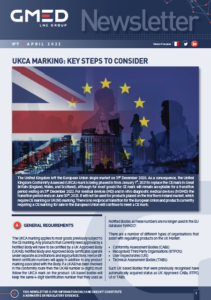 The United Kingdom left the European Union single market on 31st December 2020.
The United Kingdom left the European Union single market on 31st December 2020.
As a consequence, the United Kingdom Conformity Assessed (UKCA) mark is being phased in from January 1st, 2021 to replace the CE mark in Great Britain (England, Wales, and Scotland), although for most goods the CE mark will remain acceptable for a transition period ending on 31st December 2022. For medical devices (MD) and in vitro diagnostic medical devices (IVDMD) the transition period ends on June 30th, 2023.
It will not be used for products placed on the Northern Ireland market, which require CE marking or UK(NI) marking. There is no reciprocal transition for the European Union and products currently requiring a CE marking for sale in the European Union will continue to need a CE mark.
share
Events
Find an answer to the challenges you are facing in one of our upcoming events: trainings, webinars, forums...
